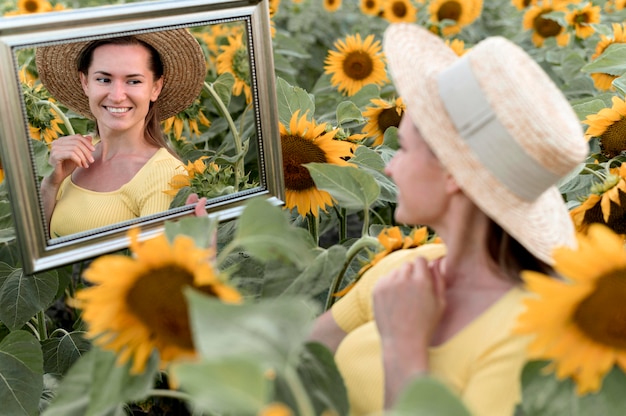Discovering Fascinating Trivia About Sunflowers

Sunflowers get their name from their large, vibrant yellow petals that resemble the sun.
Sunflowers are native to North and South America.
The tallest recorded sunflower stood at a towering 30 feet and 1 inch tall.
A sunflower head can contain up to 2,000 seeds.
Sunflowers are heliotropic, meaning they follow the movement of the sun across the sky.
Sunflowers were cultivated by Native Americans as a valuable source of food, oil, and fiber.
Sunflowers can grow in almost any type of soil, but they thrive in loose, well-drained soil.
The seeds of a sunflower are edible and packed with nutrients, including vitamin E and magnesium.
Sunflower oil is not only used for cooking but also as an ingredient in skincare products.
Sunflowers can improve soil quality by removing toxins and pollutants from the ground.
Sunflowers have been used for medicinal purposes in traditional Native American and European folk remedies.
Vincent van Gogh was inspired by sunflowers and painted a series of still-life sunflower paintings.
Sunflowers come in various colors, including vibrant yellows, oranges, and even deep reds.
Sunflowers can grow as annuals, perennials, or even as wildflowers in some regions.
Sunflower stems are often hollow, making them lightweight and easy to manage.
Sunflowers have a long blooming season, starting in early summer and lasting until early fall.
The average lifespan of a sunflower is about 2 to 3 weeks.
Discovering Fascinating Trivia About Sunflowers part 2
Sunflowers are attracted to bees and butterflies, making them excellent pollinators.
Sunflowers are known to inspire feelings of happiness and joy, hence their popularity in flower arrangements.
Sunflowers have been used as symbols of loyalty, adoration, and longevity in various cultures.
Sunflowers can turn their heads towards the sun at a rate of up to 180 degrees in a day.
The Guinness World Record for the largest sunflower head measures 32 ¼ inches in diameter.
Sunflower stalks contain a fibrous material that can be used to make paper.
Sunflowers can grow in pots or containers, making them suitable for small gardens or balconies.
Sunflowers have been used in phytoremediation projects to extract heavy metals from soil.
Sunflowers have been genetically modified to produce higher amounts of healthy fatty acids.
Sunflowers attract a variety of bird species, including finches, sparrows, and jays, who feed on their seeds.
Sunflowers are not just for humans; they can also be included in animal feed for livestock and poultry.
Sunflower seeds were a common snack among Native Americans and continue to be a popular choice today.
Sunflowers were introduced to Europe in the 16th century and quickly became a beloved garden flower.
Sunflowers can grow in a wide range of climates, from temperate to subtropical regions.
Sunflowers are an important cash crop, particularly in countries like Russia, Ukraine, and Argentina.
Sunflowers can reach their full height in just a few months, making them a fast-growing plant.
Sunflowers produce a substance called phytoalexin, which helps them fight off diseases and pests.
Sunflowers can absorb toxins such as nuclear radiation from the soil, making them useful in environmental cleanup efforts.
The sunflower is the state flower of Kansas, known as the Sunflower State.
Sunflowers have been used in traditional Chinese medicine for their anti-inflammatory properties.
Sunflowers have been engineered to produce vaccines and antibodies for medical purposes.
Sunflower seeds can be roasted and salted for a popular and nutritious snack.
Sunflowers have been used in floral therapy to improve mood and reduce anxiety.
Sunflower petals can be used to make a natural yellow dye for fabrics and fibers.
Pilots have used sunflowers to help detect small, unseen airport runways from the air due to their distinctive shape and color.
Sunflowers have been showcased in various art forms, including literature, photography, and music.
Sunflowers are frequently used in landscape design to add height, color, and texture to gardens.
Sunflowers symbolize optimism and resilience, as they face the sun each day, no matter the obstacles they may encounter.

